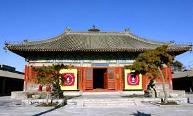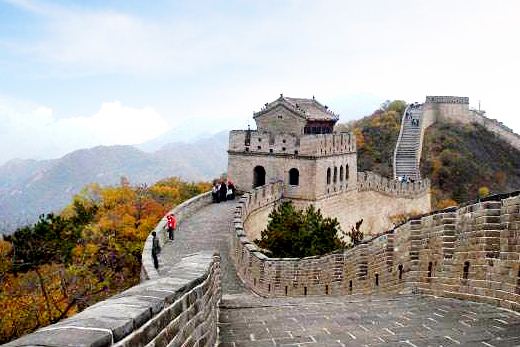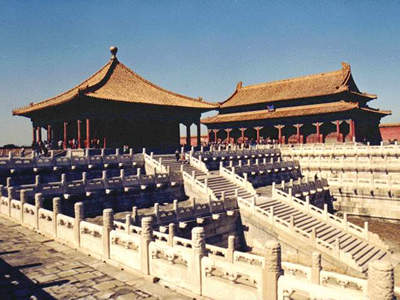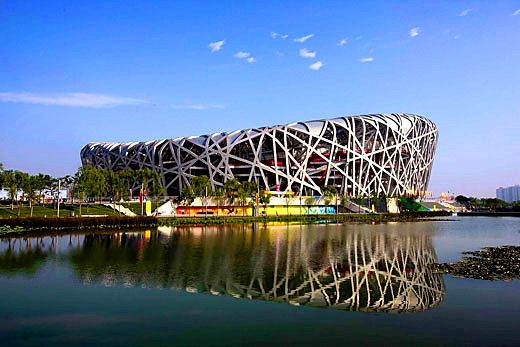 The Miaoying Monastery is situated on the north side of Fuchengmennei Street in Xicheng District of Beijing. The White Dagoba in the monastery was first built in 1096 of the Liao Dynasty and was considerably expanded and elaborately redecorated in 1271 during the reign of Emperor Shizu (Kubla Khan) of the Yuan Dynasty.
The Miaoying Monastery is situated on the north side of Fuchengmennei Street in Xicheng District of Beijing. The White Dagoba in the monastery was first built in 1096 of the Liao Dynasty and was considerably expanded and elaborately redecorated in 1271 during the reign of Emperor Shizu (Kubla Khan) of the Yuan Dynasty.
A passage from Chats of a Visitor to the Capital (Chang'an Kehua), written during the Ming Dynasty, describes the dagoba in these words: "From the corners of the buildings hang pestle-like jade ornaments. Stone balustrades line the platform. Beneath the eaves dangle countless strings of wrought iron flowers. Bells tinkle overhead in the wind. The golden apex of the dagoba glitters in the sun.
Seen from afar, the lustrous ornaments appear like a galaxy of stars." The present-day brilliance of the dagoba' s surface is due to the fact that it is painted with an expensive whitewash containing a high percentage of pulverized seashells. A local joke relates that if it were not for this whitewash, the monument would soon become a "black dagoba." In 1279, the monastery was renovated and renamed the Temple of the Emperor' s Longevity and Peace (Dasheng Shou' ansi), but was destroyed by fire 12 years later.
In 1457, a new monastery was built in its place, which was given the name it retains to this day, the Miaoying (Divine Retribution) Monastery. At the same time, 108 iron lanterns were installed around the base of the dagoba.
A verse from an early description of the monastery runs as follows: "The monastery embellishes the capital with its lofty dagoba rising above the skyline. In the wee hours of the night, the fragrance of incense drifts about beneath the lone bright moon."
The dagoba in the Miaoying Monastery is today the largest structure of its kind in Beijing. It rises to a height of 50.9 meters, making it 15 meters taller than the dagoba in Beihai Park, and has a diameter of oven 30 meters at its base. Thirteen broad circular bands of molding, called the "Thirteen Heavens," divide its surface. At the apex of the cone is an umbrella-like bronze disc structure with 36 bronze bells hanging from its rim. At the very top is a small bronze pagoda, in itself a work of art.


 About Beijing
About Beijing 


